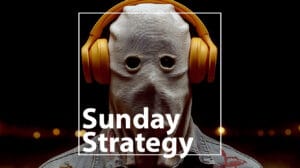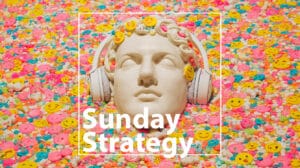With economic worries rising, especially amongst a millennial shopping audience, 90s Nostalgia is on the rise in advertising. However, there isn’t only one way to use it as brands can leverage it to bring things closer or push them further away.
90’s culture is having a moment, despite the idea that its become old enough to be taught in history class. As the NYT declares, everything ‘millennial is cool again’, recent ads have shown up targeting a millennial audience with nostalgia in different ways.
While we assume nostalgia can only be used to make us long to be closer to our past, in reality – nostalgia is a two way street. Brands can use it to shift time across a scale, pulling memories closer and also pushing them further away and causing recognition of the time that’s passed. We look below at how brands are using nostalgia in these two, distinct ways.
Nostalgia to Make the Past Seem Closer
Revisiting the 90s can often make us feel old, but when brands find the right tone, it can also evoke a feeling of what mattered to us at the time. Delivery firm Instacart’s latest campaign goes deep in the 1990s summer nostalgia in a way that will make millennial parents want some pizza rolls and a Capri Sun right now. The campaign’s research that 79% of 30-45 year olds reminisce about their 90s childhood summers and 64% overall wanted to pass their childhood treats and snacks onto younger generations.
The brand taps into this with two ads soundtracked by 90s artists, including Third Eye Blind, and featuring products straight out of 90’s childhood memories. Supporting the activity, the brand has taken a page from UK retailer Tesco’s anniversary campaign, and rolled back prices to 1999 levels on items (up to the CPI difference of 47%). The combination of emotive messaging and pricing makes Instacart’s campaign makes new and old summer memories actionable.
In a similar vein to Instacart, Vitacoco’s recent ‘Nostalgia Mall’ in NYC allowed shoppers to literally revisit the stores that they shopped in during the 90s – bringing memories physically closer.
Nostalgia to Highlight the Distance from the Past
Neutrogena’s ‘Neutrogena Remembers’ campaign takes the opposite approach, using nostalgia to reinforce the time that’s passed. Ads feature cultural touchstones like inflatable furniture or 90210’s Donna and David getting engaged, with the purpose of showing that if you remember these, you need skincare. Nostalgia serves to hammer home how time has passed.
The passage of time doesn’t have to be as explicit as in Neutrogena’s campaign to still have the same effect. Chili’s recent ’90s are back’ ads, using actress Tiffani Amber Thiessen (Kelly Kapowski on Saved by the Bell) to pitch margaritas uses the time period as a far away foil.
How Should Nostalgia Be Used?
So which approach works? Both do. Depending on the objective and the sector, how a brand uses and anchors nostalgia in advertising changes.
⏳ Nostalgia to bring memories closer often anchors in personal moments that help to create a warm, safe, familiar or positive feeling (often useful in sectors like FMCG, Services, Insurance or Banking that want to humanize). These memories may have become more rose tinted and positive over time and a brand needs to consider how and if they can evoke them authentically.
⌛ Nostalgia to push memories further away often anchors on wider cultural moments or items that mark a time to create a sense of surprise, reappraisal or shared acknowledgement (often useful in sectors like Beauty, Health or Investing / Retirement that want to spark change). These cultural moments are often objectively evaluated in a way that differs from how we remember them (inflatable furniture was never as good as it seemed).
The 90s and Nostalgia are both broad concepts
Finally, its worth considering how broad both nostalgia and ‘the 90s’ are in consumer’s minds. 2023 GWI research showed that a third of Gen Z are nostalgic for the 90s, despite most being born in the 2000s. Pop Culture has unmoored itself from a literal point in time to take up residence in the minds of consumers who weren’t even there.
When we consider the past, we often long for a time that didn’t really exist (recently coined as ‘anamoia’) and implying 90s nostalgia isn’t just limited to those who lived it. Rhode’s recent campaign featuring Tate McRae and Hailey Beiber recreating 90s looks is an example of how 90s culture is being nostalgically reinvented by those who didn’t catch it the first time.
For brands, nostalgia is a broader tool than initially expected, allowing for time to pushed forward and back – for both those who experienced it and those who wish they had.





